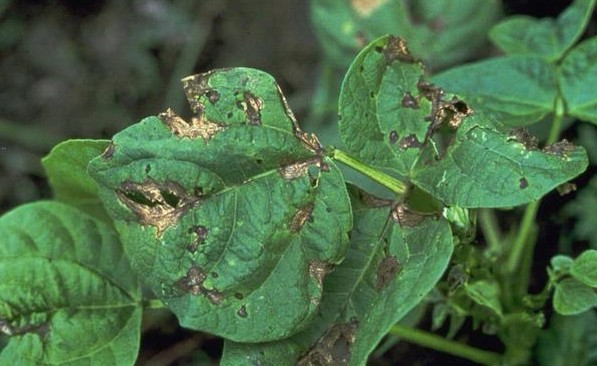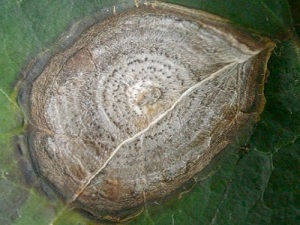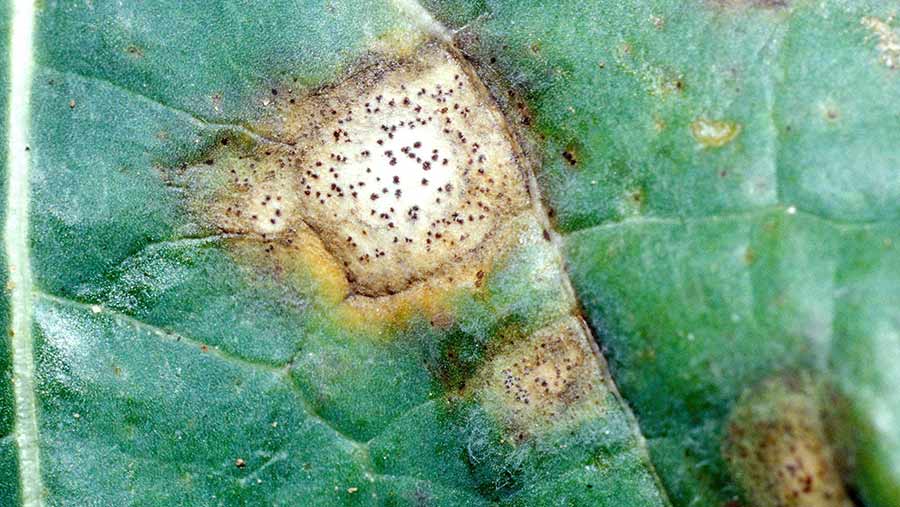
Phomosis
Phoma Betae (Pleospora Betae)
Pathogen:
Fungus
Type:
Risk:
HIGH
Micosis/Hongos
Remolacha de mesa


WHO CAUSES IT?
Phoma betae (Pleospora betae) is a phytopathogenic fungus that mainly affects beets. This fungus reproduces through asexual spores (conidia) and sexual spores (ascospores). Conidia form in structures called pycnidia, which are black, spherical fruiting bodies that appear in infected plant tissue. During wet conditions, conidia are released and dispersed by water and wind, infecting new plants. Ascospores are produced in structures called pseudothecia, which also form in dead plant tissue. These spores can survive on crop residues in the soil, facilitating reinfection in the following growing season. The fungus penetrates plants through wounds or natural openings, and once inside, it colonizes the internal tissue, producing toxins and enzymes that degrade plant cells.
SYMPTOMS
Phomosis, caused by Phoma betae, is a disease that severely affects beets, compromising their quality and yield. The first symptoms are seen as small dark Taches on the leaves and crown of the plant. These Taches expand and become necrotic, causing sunken, discolored lesions. The infection extends to the roots, where black or brown Taches can be seen, which deepen and cause internal rot. Infected plants show delayed growth and wilting, especially in high humidity conditions.
- Small dark Taches on the leaves and crown
- Sunken and discolored lesions
- Black or brown Taches on the roots
- Internal root rot
- Delayed growth
- Wilting in high humidity conditions


TEMPERATURE AND HUMIDITY
15°C - 25°C
70% - 90%
TRANSMISSION ROUTES
Conidia transported by water and wind, ascospores in crop residues, infected seeds, contaminated tools
Do you want to remove this pest? Choose how you want to treat it.
TREATMENTS
Chemical treatments
• COPPER OXYCHLORIDE 50% (EXPR. IN CU) [WP] P/P
• PIRACLOSTROBIN 6.7% + BOSCALIDE 26.7% ( ) [WG] P/P
Authorized treatments in organic farming
• COPPER OXYCHLORIDE 50% (EXPR. IN CU) [WP] P/P
Biological control
• BACILLUS AMYLOLIQUEFACIENS subsp. plantarum (strain D747) 5% [SC] P/V
Recommendations
- Implement an appropriate crop rotation to reduce the accumulation of inoculum in the soil.
- Use seeds certified pathogen-free and properly disinfected.
- Apply protective fungicides during the early stages of growth, following technical recommendations.
- Avoid excessive irrigation and maintain good ventilation in the field to reduce humidity.
- Remove and destroy the remains of infected crops to reduce the source of inoculum.
- Practice integrated pest management (IPM) to minimize damage and prevent the spread of the disease.
- Disinfect agricultural tools and equipment before use in non-infected areas.
- Regularly monitor the crop to detect early symptoms and apply timely control measures.
Sponsored link
Sponsored link
Sponsored link
Sponsored link
Sponsored link
Sponsored link
Effective against all types of fungi
TREATMENTS
Homemade remedies
There are no home treatments
Natural allies
Chemical treatments
There are no treatments for this disease. Treatments are directed at the insect vectors that transmit it. See insect treatments.
RECOMMENDATIONS
- Check the back of the leaves frequently, especially in dry weather.
- Spray water on the leaves to increase humidity and prevent them from settling.
- Keep plants healthy with good watering and adequate light.
- If you see cobwebs or damage, clean the leaves with a damp cloth or pressurized water.
- Use potassium soap or neem oil every few days until they disappear.
REPELLENT PLANTS
Rosemary, Dill, Coriander
EFFECTIVE PRODUCTS TO ELIMINATE THIS PEST
Sponsored link
Sponsored link
Sponsored link
Sponsored link
Sponsored link
Sponsored link
Effective against all types of fungi
*Recommended treatments are still recommendations according to authority databases and in no way replace the guidelines established according to the legislation of each country.
*Products shown are recommendations and not our own products. As Amazon Associates, we earn revenue from purchases of recommended products.






















